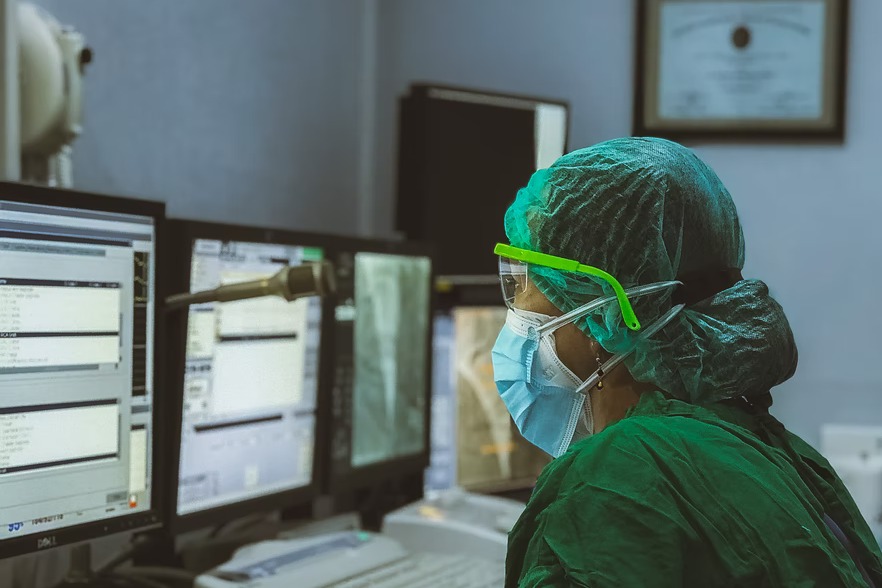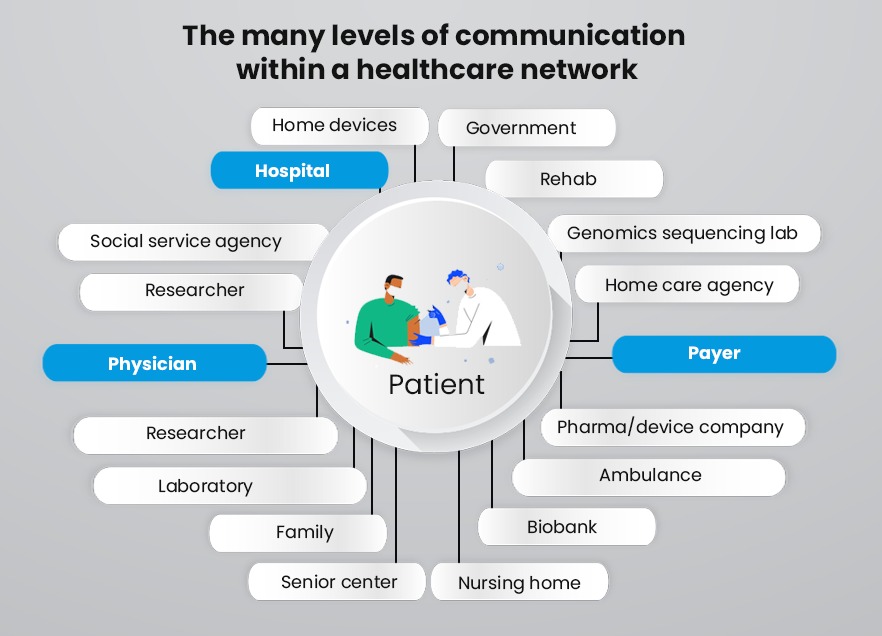
Let alone applications being unable to talk to each other seamlessly within one hospital or healthcare facility, the problem was compounded when two different healthcare providers needed a health information exchange of their data. Communication between different types of software has been hard to achieve before the development of common standards provided by HL7 protocols.
Health Level-7 or HL7 has been developed by Health Level 7 International, a not-for-profit organization. The advantage of the HL7 standard is that when a majority of healthcare software incorporates it, interoperability eases the exchange of health care data without having to resort to special software for conversion. So whether you are located in India, the UK, or the USA – it follows the same framework and similar standards.
How Does HL7 Work?
Electronic Health Records (EHRs) and interoperability are the two major drivers of technology in the healthcare segment. Interoperability is where the use of HL7 is highly significant.
To quickly understand how HL7 works, you can relate it to the process of the Internet linking millions of websites. Each of them might be developed using different languages such as PHP, .NET or WordPress (among many other platforms) but all follow the same W3C standards. Similarly, HL7 protocols define a framework that governs how electronic health data can be retrieved, shared as well as integrated.
HL7 uses a number of standards such as application standards, messaging standards, etc. that follow a set of HL7 protocols for packing and communicating between different systems. It achieves this by defining the language, data type as well as structure of the data and how it must be packaged. More than 90% of the major healthcare facilities in the US use HL7 and it’s widely adopted in over 27 countries, making it a truly global standard. Many healthcare organizations turn to HL7 integration specialists like <a “title=”Custom Software Development Service” href=”https://itechindia.co/”>iTech India, to integrate various existing systems and interfaces that are already running in a hospital or medical facility and also correct the prior HL7 implementation outcomes.
The HL7 standard has 2 different versions – Version 2 and Version 3. The 2.3 or 2.3.1 are most commonly used while V3 has only a smaller usage since it is not backwardly compatible with systems using the V2 version.. HL7 is now working on HL7 FHIR (Fast Health Interoperable Resources) that will be easier to implement since it uses modern API technology. APIs (application programming interface) is driving digital transformation outside of healthcare but there are some cybersecurity concerns which is inhibiting its wider adoption in Healthcare.

Benefits of HL7 interface integration
The US healthcare industry is particularly heavily regulated and the large amount of medical data that is continuously generated makes the industry even more complex. A common framework for data communication brings with it many benefits, let’s dive into the leading benefits.
1. Ensuring data uniformity
Statistical studies indicate that each patient contributes 80 megabytes of EMR and imaging data every year. This is a mountain of data when you look at the exponential increase of the cumulative total of patients in the system. While EMR is limited to a single medical practice, an EHR is a digital record from multiple doctors and is a holistic long-term view of the patient’s health. This is a clear indication of how important it is that health data cannot be isolated and sit in different pools.
By ensuring data uniformity between different applications within and between medical facilities, allows patient information and other health information exchange to be seamlessly transferred from admission, to diagnostics, to treatment and billing.
2. Automation of workflows
Manual data entry is time-consuming and automation of repetitive tasks is both an energy and cost saver. A standardized HL7 data workflow can help synchronize data updates simultaneously. For instance records, lab tests, and prescriptions exchanged between departments can completely eliminate manual data entry.
3. Facilitate information exchange with regulators
Healthcare providers, in the US particularly, need to regularly share information with regulators to meet public health reporting standards. When medical systems achieve HL7 compliance, it can simplify this process and reduce the burden on admin by sharing data electronically. This is particularly important when it comes to medical devices sharing their specifications. Same for biopharmaceuticals that need to share information about drug development and clinical trials.
4. Facilitates collaboration globally
With over 27 countries and 1600 healthcare providers having adopted the HL7 standards, for the first time in history, it has become easier to share medical data across borders. This international collaboration has been of crucial importance in the global Covid-19 pandemic.
5. Patients can conveniently access their records
When EHR records are coupled with interoperability, patients will be able to access their records and new updates easily online. This becomes a boon when it comes to consulting multiple specialists. The time-consuming process of lugging around a pile of documents or providing a full picture of their medical history is instantly solved.
6. Reduce investments in new technology upgrades
While investing in adding a new HL7 framework will require an initial investment, the costs reduce in the long run. This is because the system life of legacy systems can be extended since it uses the messaging services of the HL7 framework to interface with newer systems.
Need Help with your HL7 implementation?
iTech’s HL7 Connect is a proprietary product that provides a threefold advantage – It’s practical, cost-effective, and HL7 compliant. We have over 10 years of building healthcare solutions for the US and India. If you are reading this, you are ready for the benefits of an HL7 interface, contact iTech India today.



